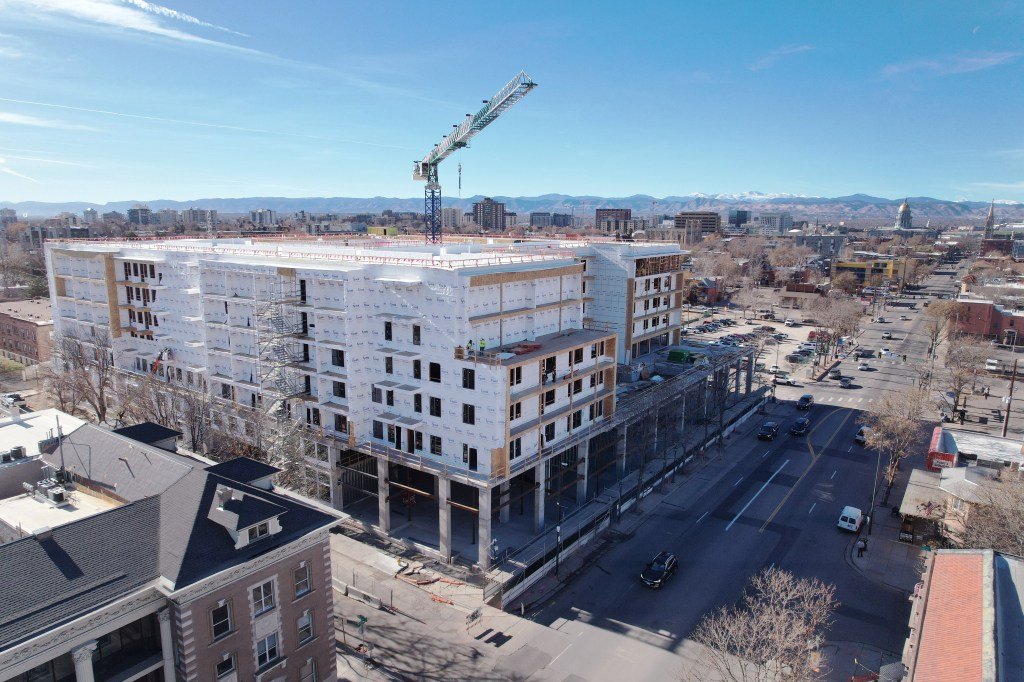Metro Denver developers pushed out more than 5,000 new apartments in the third quarter, and rents barely moved despite that high volume, according to a quarterly update from the Apartment Association of Metro Denver.
For the past several quarters, developers have added as many apartments in three months as they would average across an entire year before 2011.
“I have been concerned about this for some time that we would flood the market with lots of apartments and vacancies would shoot up,” said Cary Bruteig, author of the quarterly report during a press call Wednesday.
Rising vacancies would in turn force landlords to slash rents. So far, that hasn’t happened.
Average rents in the region rose $8 last quarter to $1,911 and are up 1.2% over the past year, below the 1.4% rate of inflation measured in September.
The overall vacancy rate fell 0.3% to 5.3% and moved lower in 18 out of 33 submarkets. Denver, which has seen a high concentration of new multifamily projects, had the highest county vacancy rate at 5.8%. The Central Business District had the highest submarket rate at 6.6%.
Fueled by strong migration to the state, the 1970s was a boom era for apartment construction. But after an oil bust and then a real estate bust, things calmed down in the following decades. The region averaged about 5,000 new apartments a year until 2011, when the average kicked up to around 10,000 a year, Bruteig said.
Over the past 12 months, developers have added 21,158 new apartments. That is double the pace seen last decade and equivalent to about 5% of all the existing apartments built in the past 100 years, Bruteig said.
Even though fewer people are moving to metro Denver from other states this decade compared to last, Bruteig said, “We see no softening in terms of people moving into new apartments in the metro area.”
Renters signed leases to take on 20,935 of those units in the third quarter, or about 96% of the new supply.
And while the construction pipeline has shrunk some as projects are built, it remains huge, with 34,000 units currently under construction and another 57,000 in the planning stages, Bruteig said.
Further out, however, the AAMD is concerned that restrictions around multifamily, primarily Denver’s requirement that market-rate projects include more affordable units, could limit future supply.
“We are seeing fewer units planned for the future because builders and operators can’t comply with the new restrictions being enforced. Fewer units will eventually destabilize rent prices,” warned Drew Hamrick, senior vice president of government affairs for AAMD.
Originally Published:













Leave a Reply